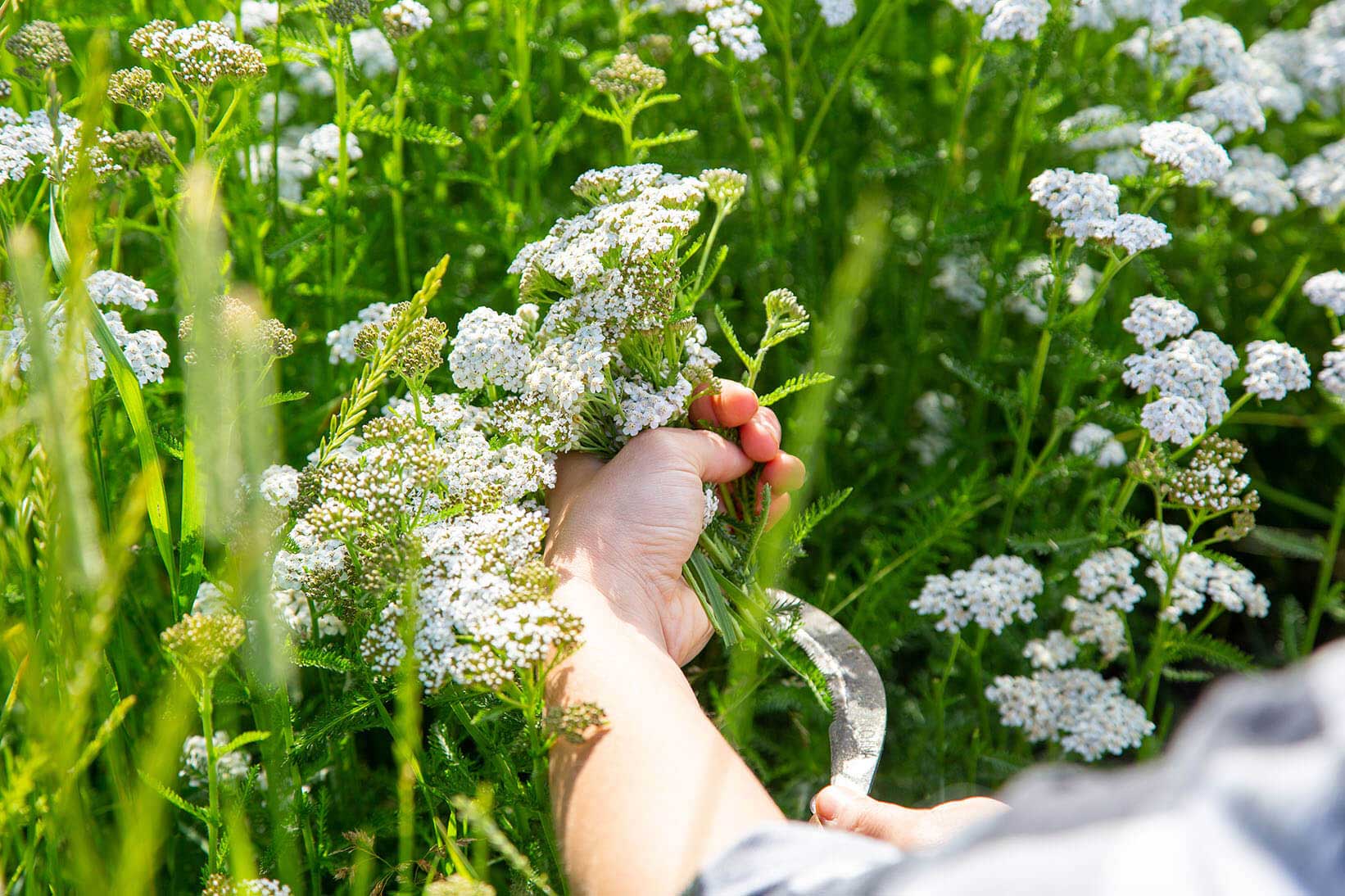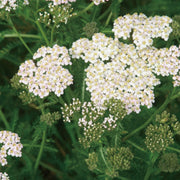Yarrow oil is good for muscles, joints, and skin that needs strong, yet tender, support!
It has a long history of helping people feel healthy and whole. It was even said that Achilles used yarrow to treat his injured warriors at Troy, and this leads to yarrow’s Latin name: Achillea millefolium.
A blend with yarrow is good for massaging sore muscles, comforting joints (in both the short and long term), easing tension and cramps, quieting the belly, and nourishing the skin.
In this post, you’ll learn a bit about the yarrow plant itself, and more about why yarrow is good for both your body and emotions.

What is yarrow oil good for?
Yarrow oil is good for muscles, joints, the belly, and skin care. It’s especially helpful for sore, irritated skin, and to care for scars.
This tough but soothing oil is great for issues that feel incredibly tender—maybe even too sensitive to touch—yet require potent support. Yarrow is very gentle yet offers strength to help the body rebuild itself. Its cooling touch brings quick relief, and its potent benefits are helpful for both acute and ongoing issues.
Studies have also found that yarrow oil is good for purifying the skin, as it can reduce the presence of certain types of microbes.
Research even suggests that, in your skin care routine, including a few drops of yarrow is good for a clear, even complexion, quieting signs of hyperpigmentation.

Yarrow oil science
Yarrow’s chemistry backs up these uses!
It’s rich in the components:
- β-caryophyllene
- β-pinene
- chamazulene
- sabinene
All four components have profound soothing effects, giving yarrow four key points of relief for achy, tight muscles, sore joints, irritated skin, a queasy belly, and more.
This explains why yarrow has been used throughout most of recorded history as a traditional plant for all kinds of aches. And it shows that yarrow oil can hold an important place in your natural care cabinet. For a lot of people, this is a “go-to” oil they wouldn’t be without! Personally, I consider it one of the most important oils in our collection.
Did you know?
The chemical component Chamazulene gives yarrow a rich, prismatic blue color!
The emotional benefits of yarrow oil

The ability to balance opposites means yarrow oil is good for emotional wellbeing, too.
Yarrow can help you through times of major life change, when your emotional equilibrium might feel shaken, or through prolonged periods of stress that leave you feeling exhausted, as though you have “a short fuse."
The β-caryophyllene content in yarrow is especially encouraging, showing that it can be used to soothe emotions related to stress, such as anger, melancholy, and anxious feelings.












